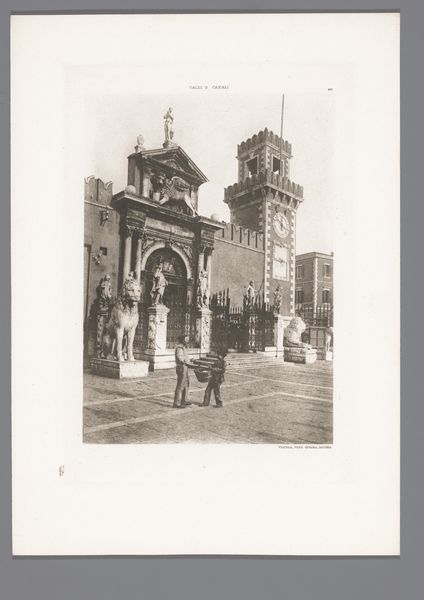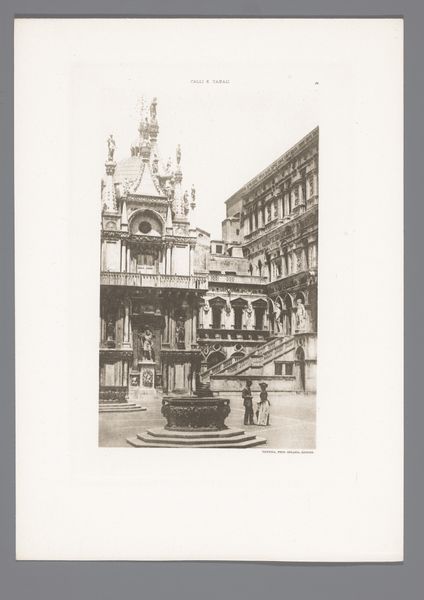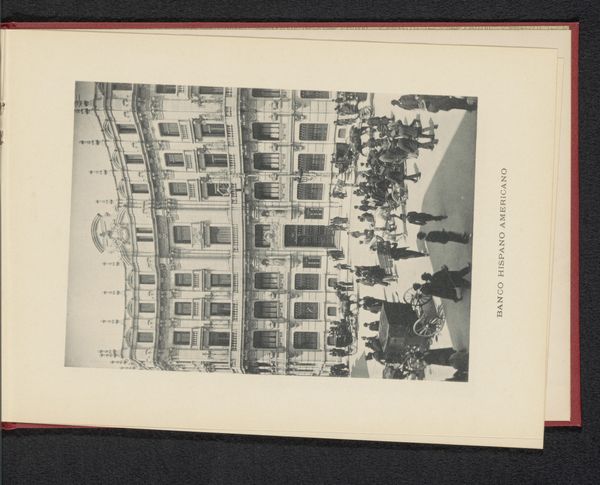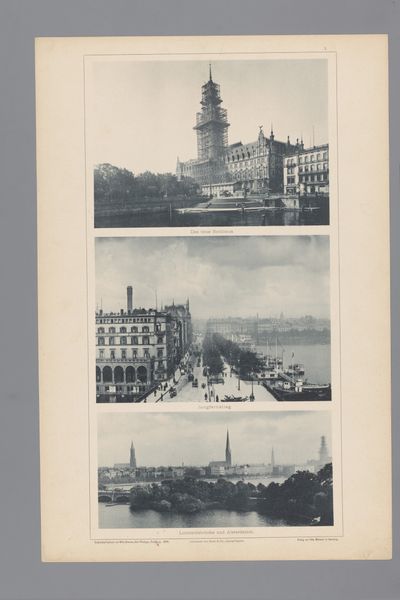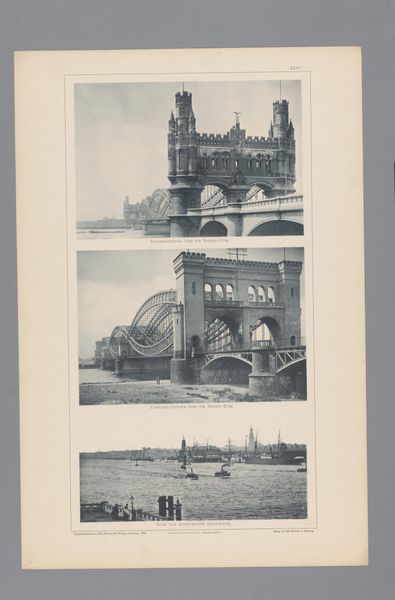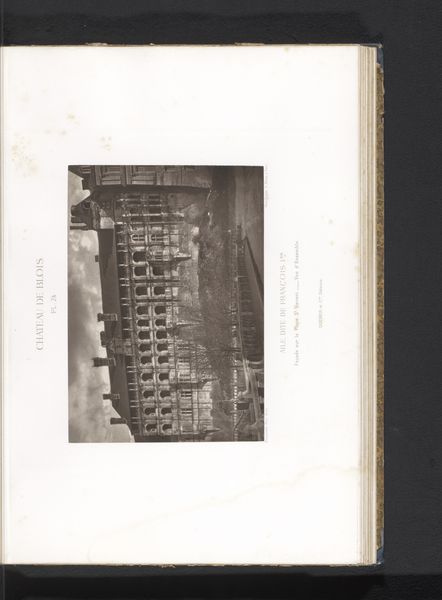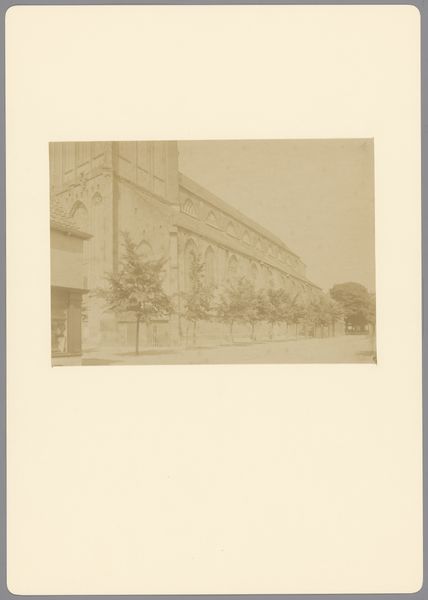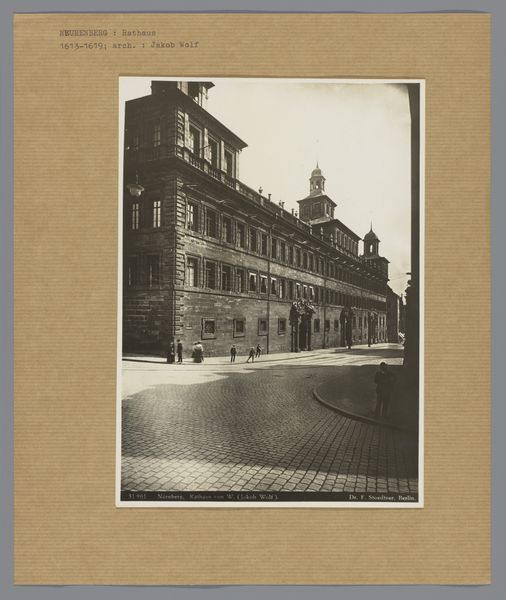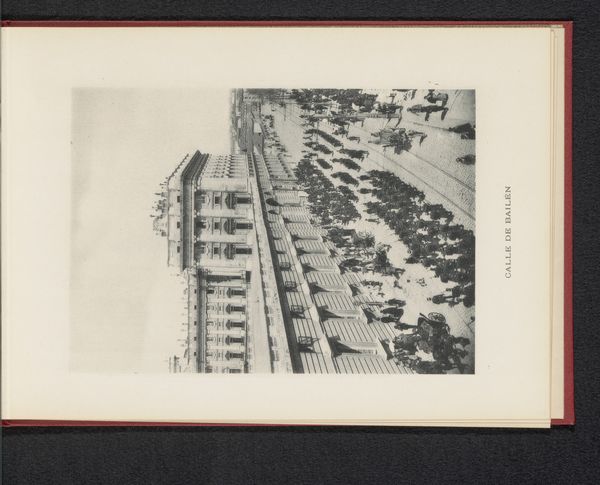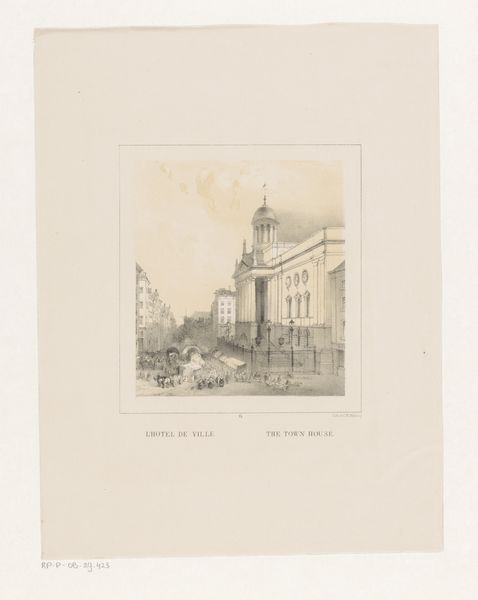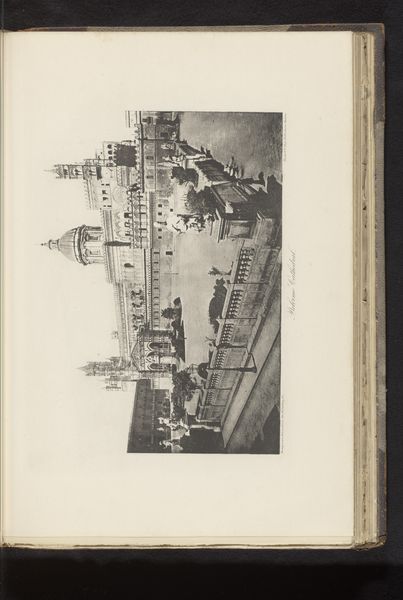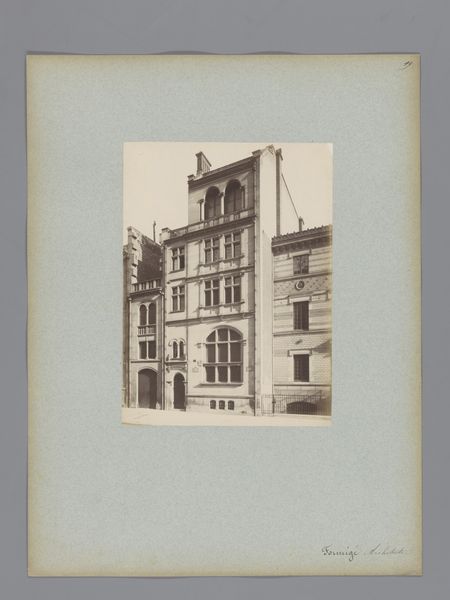
Dimensions: height 185 mm, width 135 mm
Copyright: Rijks Museum: Open Domain
Curator: Before us is an evocative gelatin silver print entitled "Gezicht op het San Marcoplein met de Campanile di San Marco," or "View of St. Mark's Square with the Campanile," dating back to before 1898. Editor: It has a rather ghostly atmosphere. The famous Campanile looms so large and empty, almost blotting out the sky, while the piazza seems utterly deserted. It projects an image of sublime desolation. Curator: I'm fascinated by the choice of the gelatin silver process. It offered incredible tonal range and sharpness at the time, which suggests a conscious decision to capture every detail, texture, and variation of light falling across the stone of these imposing buildings. One has to ask about access. I would consider how difficult it might have been to transport all the necessary materials for its creation to Venice. Editor: Absolutely, and it begs us to consider what statements are made by its deserted streets and its composition, particularly in this period prior to mass tourism taking over Venice. Perhaps a quiet critique about Venetian society in its decline. The towering Campanile and empty plaza highlight the themes of power, history, and social structures, but do so from a deliberately desolate perspective. The angle, coupled with the emptiness, gives us this interesting feeling. Curator: Indeed, thinking about production, how does a commercial studio approach the concept of "art" in pre-mass tourism? Are they producing souvenirs, or do they conceive of this piece as something more profound than commercial goods? In what ways does the creation, consumption, and access of "high art" limit access for certain communities? Editor: Good questions! I wonder too if the empty square suggests a longing for a Venice that was quickly disappearing due to these early traces of tourism. Are we looking at a photographic essay commenting on that change and loss of identity through urban development and mass production? What social classes had the luxury of leisure and travel to appreciate Venice in person? Curator: The materiality definitely adds to the discourse of photography moving from a more democratic form to what could be considered “fine art”, blurring boundaries between labor and the elite classes in control. Editor: In this way, this photo of St. Mark’s Square offers far more than simply a depiction of a place, offering commentary on its present, past, and what its future might hold. Curator: It provides us many fascinating access points for critical analysis of this moment, and I find that it invites me back for continued examination.
Comments
No comments
Be the first to comment and join the conversation on the ultimate creative platform.
